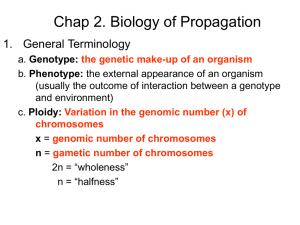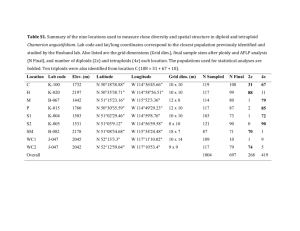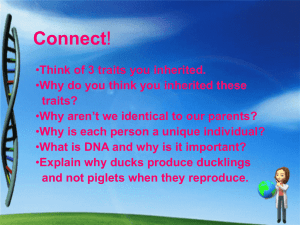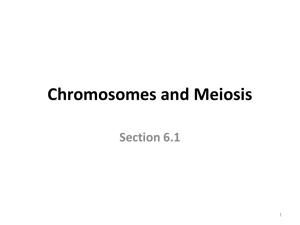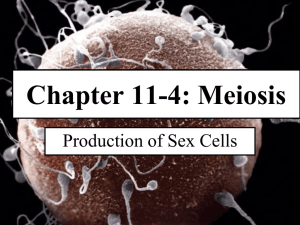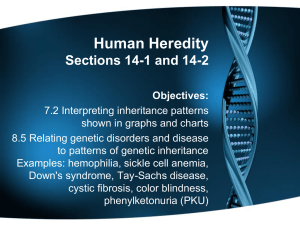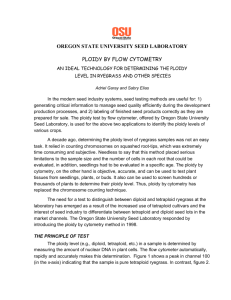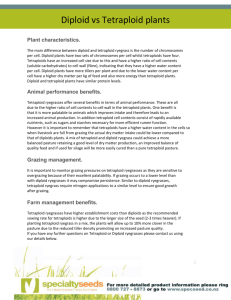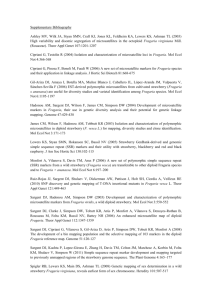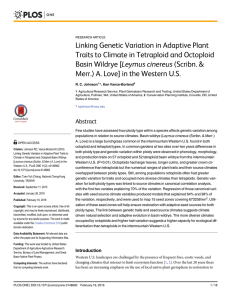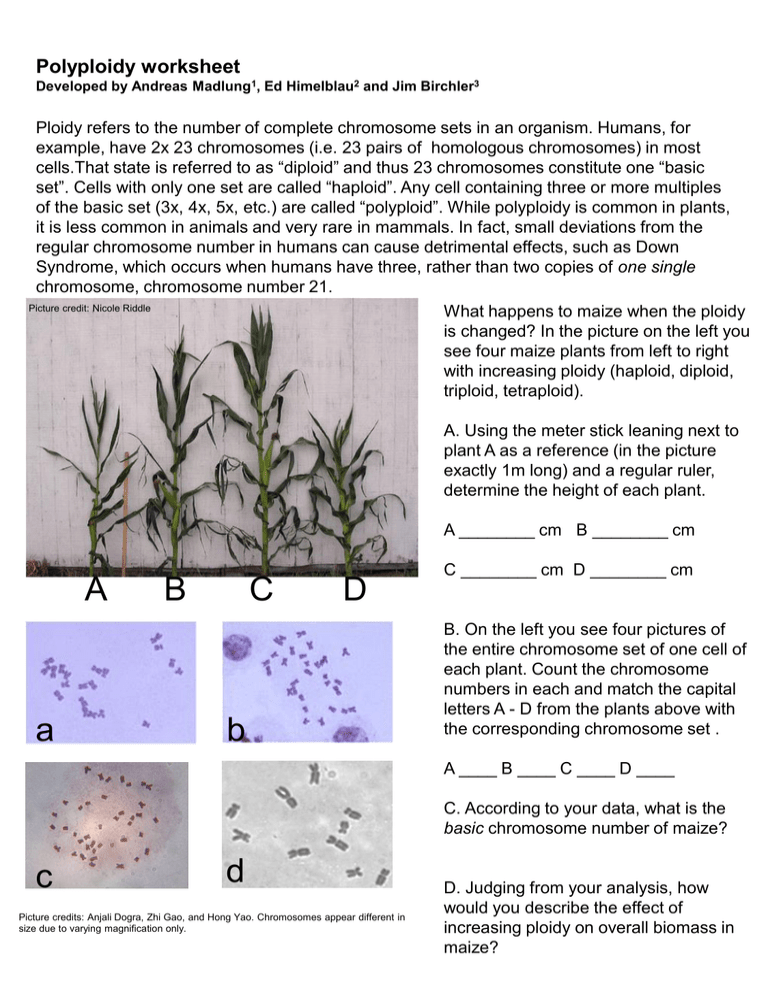
Polyploidy worksheet
Developed by Andreas Madlung1, Ed Himelblau2 and Jim Birchler3
Ploidy refers to the number of complete chromosome sets in an organism. Humans, for
example, have 2x 23 chromosomes (i.e. 23 pairs of homologous chromosomes) in most
cells.That state is referred to as “diploid” and thus 23 chromosomes constitute one “basic
set”. Cells with only one set are called “haploid”. Any cell containing three or more multiples
of the basic set (3x, 4x, 5x, etc.) are called “polyploid”. While polyploidy is common in plants,
it is less common in animals and very rare in mammals. In fact, small deviations from the
regular chromosome number in humans can cause detrimental effects, such as Down
Syndrome, which occurs when humans have three, rather than two copies of one single
chromosome, chromosome number 21.
Picture credit: Nicole Riddle
What happens to maize when the ploidy
is changed? In the picture on the left you
see four maize plants from left to right
with increasing ploidy (haploid, diploid,
triploid, tetraploid).
A. Using the meter stick leaning next to
plant A as a reference (in the picture
exactly 1m long) and a regular ruler,
determine the height of each plant.
A ________ cm B ________ cm
A
a
B
C
D
b
C ________ cm D ________ cm
B. On the left you see four pictures of
the entire chromosome set of one cell of
each plant. Count the chromosome
numbers in each and match the capital
letters A - D from the plants above with
the corresponding chromosome set .
A ____ B ____ C ____ D ____
C. According to your data, what is the
basic chromosome number of maize?
c
d
Picture credits: Anjali Dogra, Zhi Gao, and Hong Yao. Chromosomes appear different in
size due to varying magnification only.
D. Judging from your analysis, how
would you describe the effect of
increasing ploidy on overall biomass in
maize?
Fruit yield in polyploids
Many of today’s agricultural crops are polyploid. Sometimes, an increase in ploidy
results also in an increase in organ size. Not in all cases this means a greater total
yield in biomass, though.
QuickTime™ and a
TIFF (Uncompressed) decompressor
are needed to see this picture.
Fragaria vesca (Wild Strawberry) Fragaria virginiana
and Fragaria chilioensis
(diploid)
picture credit: www.luontonetti.com
(octoploid)
diploid tetraploid
picture credit: www.firestonepacificfoods.com
picture credit: Akio Kato.
Nomenclature in polyploids
The chromosome number in somatic (body) cells of a species is commonly given as 2N
while the number of chromosomes in a gamete (sex cell) regardless of ploidy is N. X is the
“most likely base number” of chromosomes. Recall that in humans this number is 23.
Therefore, in humans one would say 2N = 2X = 46.
A tetraploid cell is described as 2N = 4X. A human tetraploid cell would therefore be
2N = 4X= 92.
Using the information from the previous page, answer the following questions:
A. What is the base number X of chromosomes in maize?
B. What is N for each of these ploidy levels in maize?
diploid: N=______; tetraploid: N=______
C. Determine the gametic and somatic chromosome number for the diploid and octoploid
strawberry species shown above. (The diploid strawberry has 14 chromosomes in somatic
cells.)
Fragaria vesca: ___N = ____X =
Fragaria virginiana: ___N=____X =
Determination of ploidy level
To determine the level of ploidy in an unknown species the best way is to make a
chromosome spread like you saw on page 1 and count the chromosomes. But there
is an easier way to determine the relative ploidy of two individuals of the same
species. To tell if one or the other has a higher ploidy level, a surprisingly good
diagnostic tool is to measure the size of the stomata on the leaf. Below are three leaf
imprints of maize, each taken at the same magnification.
Using a ruler, measure the length of 5 stomata on each picture, calculate the average
and order the pictures in ascending ploidy.
A
B
photo credit: Hong Yao
C
Picture A shows the leaf of a _____________maize leaf.
Picture B shows the leaf of a _____________maize leaf.
Picture C shows the leaf of a _____________maize leaf.
terms to use:
diploid,
tetraploid
hexaploid
Contact information: 1: Department of Biology, University of Puget Sound, Tacoma, WA, 98416, email:amadlung@ups.edu
2: California Polytechnical University, San Luis Obispo, CA 93407, email:ehimelbl@calpoly.edu; 3:University of Missouri,
Columbia, MO 65211, email: BirchlerJ@missouri.edu


